Università degli Studi di Pavia
Centro Interdisciplinare di Bioacustica e Ricerche Ambientali
Via Taramelli 24 - 27100 Pavia - Italye-mail : cibra@unipv.it
The voices of marine mammals of the Mediterranean Sea
Odontocetes
Stenella coeruleoalba
The striped dolphin, while is a widespread species, it is
not well studied for its acoustic features yet. It mostly
produces high frequency whistles that may extend from few
kHz to more than 20 kHz, with duration normally below 1
second, and echolocation clicks with energy peak among 50
and 150 kHz. It can produce whistles and clicks at the
same time. It also emits series of clicks at high rates,
called “bursts”, that appear tonal to the human ear. In
literature the most varied names are given to these
sounds: howling, meows, etc. Recent studies, still in
progress, reveal that acoustic activity is significantly
greater at night, when a category of impulsive sounds,
called “castanets”, predominates on the other signals. The
castanetses are rarely present in the daytime; it is
believed that this acoustic behaviour is part of a hunting
strategy to find food.
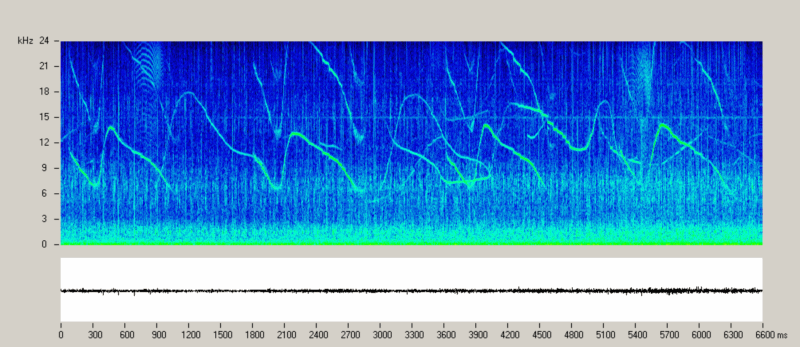
Recording of whistles from a group of striped
dolphins. Whistles from different animals overlap,
though it is possible to see repeated shapes probably
emitted by a same individual. Arrows indicate two bursts
of clicks.
S_coeruleoalba_whistles.wav (6.2MB) S_coeruleoalba_whistles_short.wav
(570kB)
S_coeruleoalba_whistles.mp3
(1.1MB) S_coeruleoalba_whistles_short.mp3
(105kB)
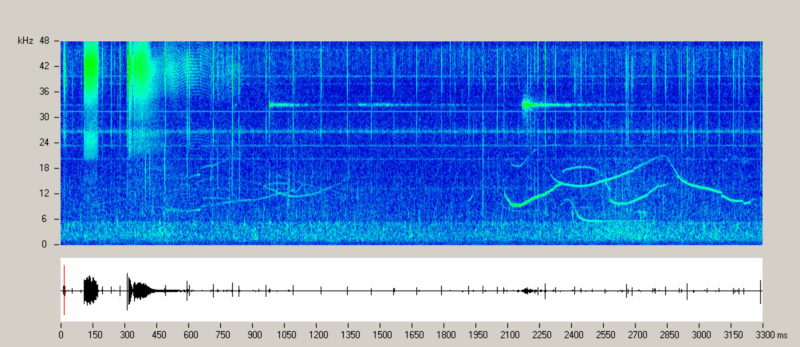
Wide band recording of striped dolphins. Thin vertical
lines are the spectrographic image of the clicks; on the
left two bursts, that are very fast click series, are
shown; on the right, whistles of at least two
individuals overlap (other weak whistles of far animals
are also shown).
Horizontal thin lines are electronic interferences,
spots in the circles are due to the ship’s echosounder.
Tursiops truncatus
The bottlenose dolphin can be easily maintained in
captivity and thus it has been studied for decades and,
because of its learning abilities and vocal behaviours, it
has become the prototype of the studies on the possible
communication man-dolphin. It is also the species in which
ecolochation capabilities are better known, therefore it
represents the paradigm through which the other species
are studied.
It can emit a large variety of signals, it is able to
imitate sounds that it listens and to learn to use sounds
for specific situations.
Wild animals have a large repertoire too; it produces
whistles modulated in frequency among few kHz and over 20
kHz, fast series of clicks, and echolocation clicks. In
its repertoire there is also the "jaw-clap" (a clapping
sound produced by shutting the jaw), an impulsive sound
that seems a shot, often called "gun-shot". T_truncatus_bang.wav
(500kB) T_truncatus_bang.mp3
(86kB)
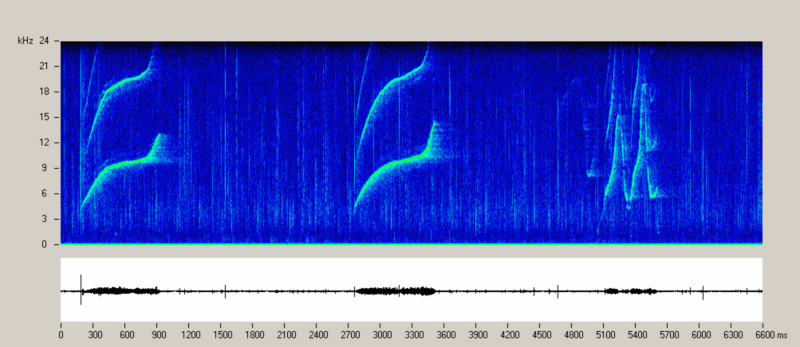
Bottlenose dolphin’s whistles. T_truncatus_whistles.wav
(1.6MB) T_truncatus_whistles_short.wav
(600kB)
T_truncatus_whistles.mp3
(287kB) T_truncatus_whistles_short.mp3
(105kB)
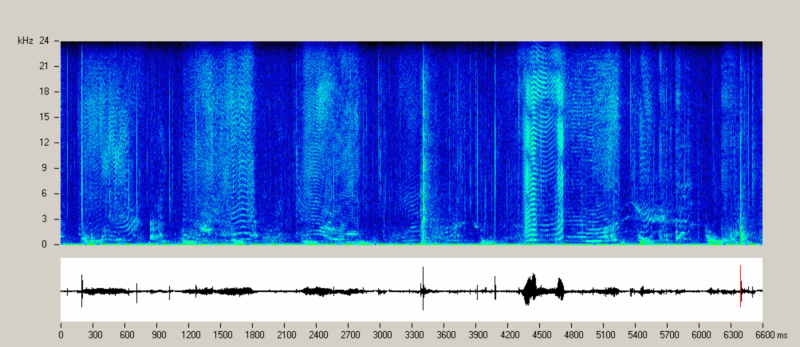
Fast click trains emitted by a bottlenose dolphin with
a repetition rate of many hundreds of clicks per second.
The human ear perceives these as tonal sounds that
resembles meows and squeaks. Arrows indicate two
“jaw-claps”. T_truncatus_buzzes.wav
(800kB) T_truncatus_buzzes.mp3
(147kB)
Delphinus delphis
The acoustic behaviour of common dolphins is not well
known, though it is very similar to that of the striped
dolphins, with frequency modulated whistles ranging to
more than 20 kHz and echolocation clicks.
The available knowledge does not allow discriminating
common dolphins and striped dolphins with acoustic cues
only.
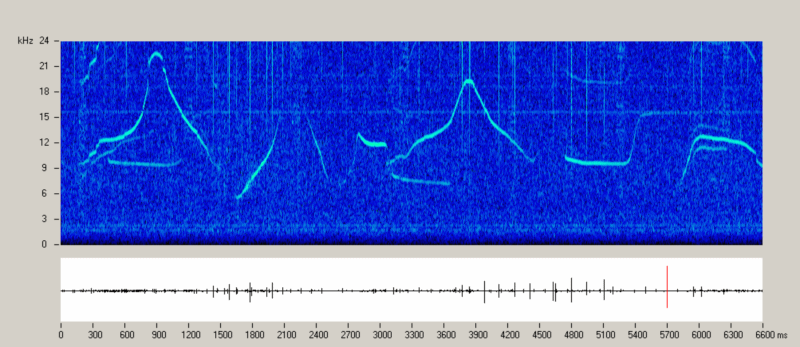 Whistles and clicks emitted
by common dolphins. D_delphis.wav
(2.5MB) D_delphis.mp3
(456kB)
Whistles and clicks emitted
by common dolphins. D_delphis.wav
(2.5MB) D_delphis.mp3
(456kB)
Grampus griseus
Risso’s dolphin mostly produces echolocation clicks and
more rarely short whistles. Clicks emitted at high rates,
other than for echolocation purposes, are likely used for
communication. Such high rate click series sound like
tonals to the human ear.
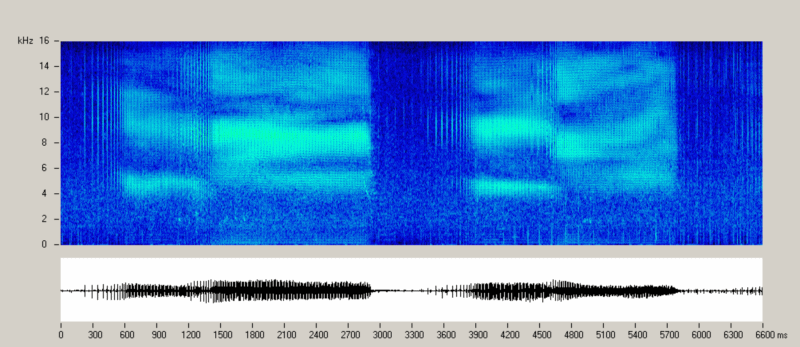
Trains of clicks emitted with a repetition rate of tens
per second; the human ear perceives them as a raspberry.
G_griseus.wav (6.2MB) G_griseus_short.wav
(400kB) G_griseus.mp3
(1.1MB) G_griseus_short.mp3
(103kB)
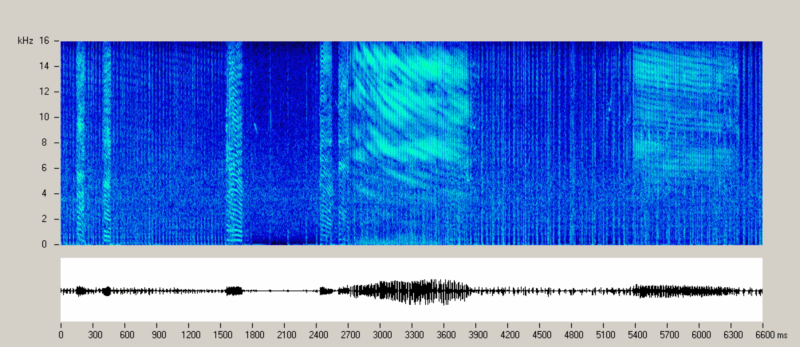
Fast click series from a Risso’s
dolphin.
Globicephala melas
Long finned pilot whales emit modulated low frequency
whistles rarely exceeding 5 - 8 kHz and clicks. The firsts
are believed to be social signals, while the seconds are
very likely biosonar pulses for echolocation purposes.
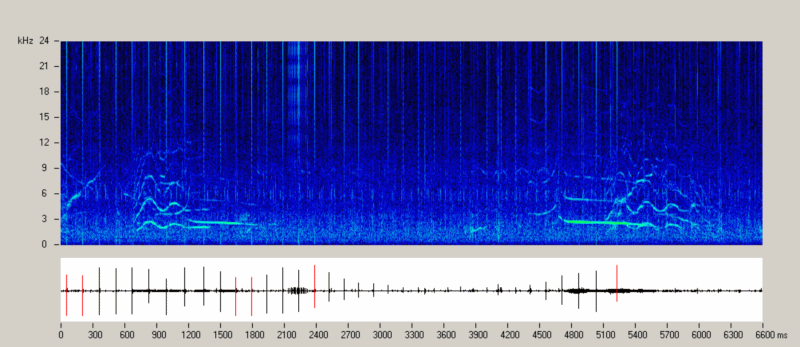
Pilot whales’ whistles. The fundamental frequency of
whistles is normally below 5 kHz.
G_melas.wav (1MB) G_melas.mp3
(196kB)
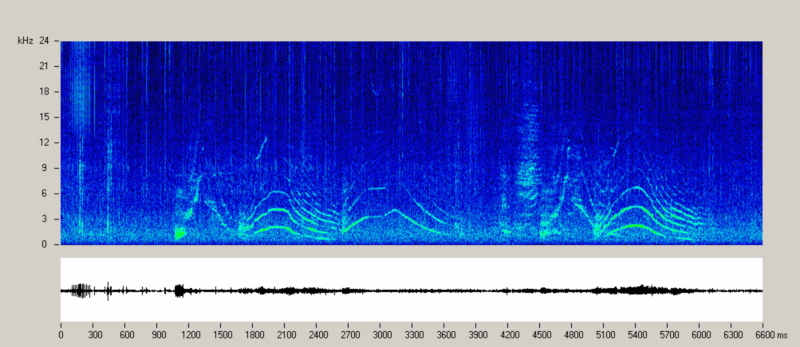
Pilot whales whistles and clicks.
Steno bredanensis
This species is poorly studied and few recordings are
known. The only taken in the Mediterranean Sea, taped in
1957 by Bill Watkins, shows clicks and simple whistles
with few modulations but frequency shifts. Frequencies are
normally below 17 kHz.
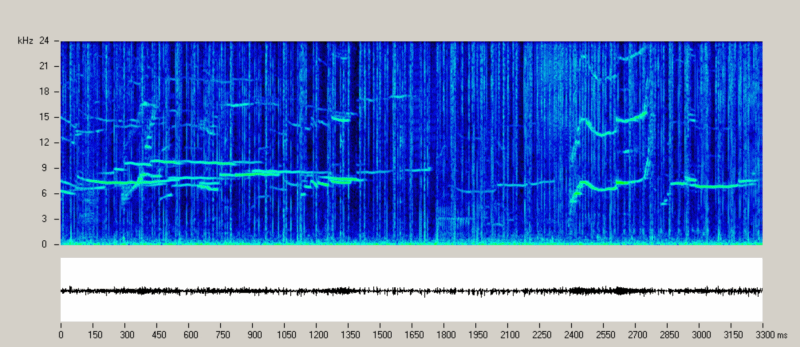 Recording
made by Bill Watkins (WHOI, Woods Hole Oceanographic
Institution, USA) in Mediterranean waters.
Recording
made by Bill Watkins (WHOI, Woods Hole Oceanographic
Institution, USA) in Mediterranean waters.
Ziphius cavirostris
In the last 10 years attention focused on this species,
and on beaked whales in general, because of their repeated
presence in mass strandings occurred in concomitance with
military sonar exercises. Even if the causes of the
strandings are not completely determined, it is clear the
connection with acoustic issues. The Cuvier’s beaked
whale’s acoustic behaviour is still mostly unknown and a
few hypotheses and datasets are today under discussion. In
particular it would be important too know the sounds they
emit to possibly detect their presence in areas to be used
for sonar exercises.
The team of Woods Hole Oceanographic Institutions is
currently investigating on the diving and vocal behaviour
of this species by attaching (with suction caps) an
acoustic recorder on its back. According to data published
by the WHOI team the Ziphius emits echolocation clicks
centered on 40 kHz with about 400 msec of inter click
interval (ICI) when it is diving at depth greater than
400-500 meters. This could explain why those clicks have
never been recorded with hydrophones close to the surface.
Phocena phocena
The harbour porpoise is the smallest dolphin inhabiting the Mediterranean – Black Sea system. This species is mainly studied in the North Sea waters because of the interaction with fisheries. It produces narrow band echolocation clicks at about 140 kHz.
Created June 2005, updated August 2005
